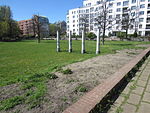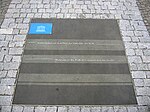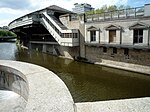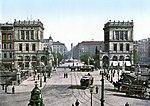Hebbel-Theater
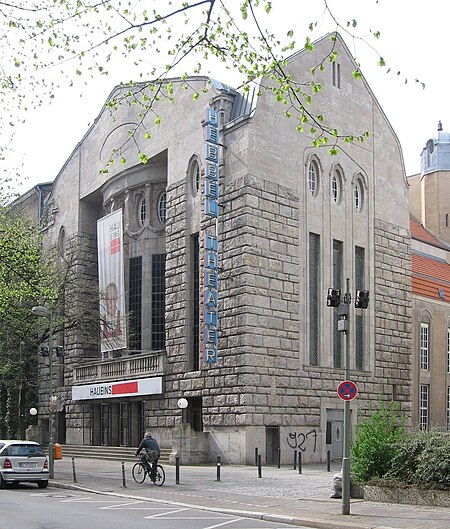
The Hebbel-Theater (Hebbel Theatre) is a historic theatre building for plays in Berlin-Kreuzberg, Germany. It has been a venue of the company Hebbel am Ufer (HAU) from 2003. The theatre, with approximately 800 seats, was built by Oskar Kaufmann in 1907/08 in Jugendstil. The corner building is integrated into the row of houses. It was an early and unique work by the theatre architect, and established his fame as a master theatre builder who then created five more theatres in Berlin. The Hebbel-Theater thrived in the 1920s. It was the only Berlin play theatre to survive World War II almost without damage. The Hebbel-Theater, the Schaubühne am Halleschen Ufer and the Theater am Ufer are all venues of HAU.
Excerpt from the Wikipedia article Hebbel-Theater (License: CC BY-SA 3.0, Authors, Images).Hebbel-Theater
Stresemannstraße, Berlin Kreuzberg
Geographical coordinates (GPS) Address Website External links Nearby Places Show on map
Geographical coordinates (GPS)
| Latitude | Longitude |
|---|---|
| N 52.5 ° | E 13.387222222222 ° |
Address
HAU 1 (Hebbel am Ufer)
Stresemannstraße 29
10963 Berlin, Kreuzberg
Germany
Open on Google Maps
